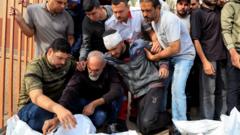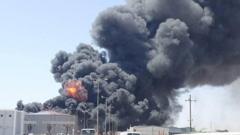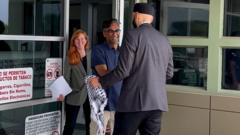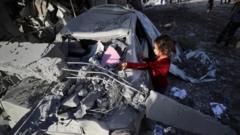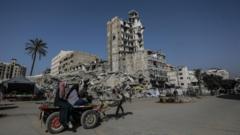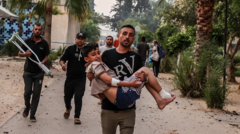Satellite imagery reveals that Israel is developing multiple sites in Gaza for humanitarian aid distribution, amid criticism and strong opposition from UN agencies and humanitarian organizations.
New Humanitarian Aid Sites Under Construction in Gaza Amid Controversy
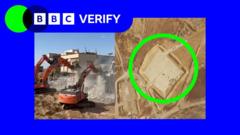
New Humanitarian Aid Sites Under Construction in Gaza Amid Controversy
Israeli Government's Aid Distribution Plan Faces Opposition From UN and NGOs
Israel is currently preparing several construction sites across Gaza aimed at facilitating a controversial humanitarian aid distribution initiative. This plan comes in the wake of the Israeli government's decision in March to halt food and medicine deliveries to Gaza, a move described by many international leaders, including those from the UN and various Middle Eastern countries, as an attempt to pressure Hamas regarding hostages. Reports also suggest that Israel accuses Hamas of diverting aid supplies, a claim that the group has denied.
The United Nations has expressed grave concerns, noting that the blockade has led to dire shortages of essential supplies, pushing Gaza's population of approximately 2.1 million to the brink of famine. The US recently announced plans for aid distribution via new operational hubs within Gaza, to be managed by private companies and protected by Israeli security forces, contradicting earlier traditional aid methods.
Analyses of satellite images point out that construction has commenced on these sites, including newly cleared land and infrastructure development in southern and central Gaza. Although Israeli officials have not revealed the precise locations of these hubs, sources indicate that four distribution centers will be established in southern Gaza, with plans for one additional hub further north near the military-controlled Netzarim Corridor.
The Gaza Humanitarian Foundation originally projected that the new initiative would cater to 1.2 million people, roughly 60% of Gaza's total population, but later called for urgent support via conventional channels until these centers become operational. Criticism has arisen, particularly about the plan's exclusion of northern Gaza aid, heightening fears that residents may be forced to relocate southward.
UN agencies have firmly opposed the plan, characterizing it as misaligned with fundamental humanitarian rights. UN representatives have accused Israel of leveraging essential supplies, like food and fuel, as part of a military strategy, raising alarm that vulnerable populations could be denied essential aid amid militarized control processes.
In a tough rebuttal, Oxfam's Bushra Khalidi termed the initiative a "farce," asserting that the logistical measures would not resolve the underlying issues of displacement and starvation as a weapon of war. She urged the immediate lifting of the siege and unimpeded access for humanitarian agencies to perform their duties effectively.
While satellite imagery has pinpointed several potential aid distribution sites, including one located roughly 650 meters from the Egyptian border, the Israeli Defense Forces (IDF) have not commented on these developments. The new humanitarian channels, integrated within a recently established security zone known as the Morag Corridor, continue to raise concerns about accessibility for the most vulnerable groups within Gaza.
As of now, the external conditions surrounded these humanitarian operations remain critical, with ongoing discussions about the legality of Israel's activities in segments of Gaza where progressive construction and demolition efforts also persist. With the international community watching closely, the future of humanitarian aid access and support for the Gaza population hangs in the balance.


